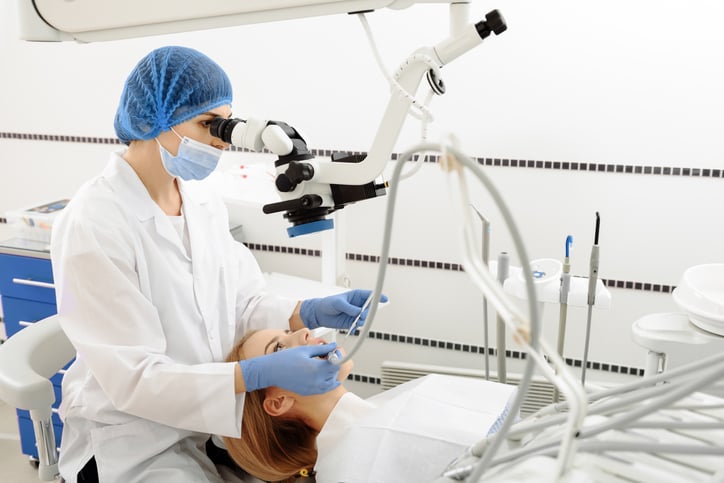
Fear of visiting the dentist and undergoing oral surgery can make patients reluctant to seek dental care and increase their discomfort when they do. Many Americans suffer from some form of dental anxiety. Oral surgery to treat cavities, infections, broken teeth, and jaw and gingival health issues are among the most common medical procedures.
Although most procedures are performed on an outpatient basis, dental surgery can also be an emergency procedure in the event of an obstructive injury to the teeth or jaws, a serious infection, or an injury that complicates other conditions. Whether performing dental suction in an office, in a hospital, or in an emergency setting, the right technique can lower the risk of complications and ease patient anxiety.
Know When and Why to Suction
Suctioning is almost always necessary to remove excess saliva and fluids during a dental procedure. Suctioning also maintains a clean oral cavity and can prevent choking and aspiration. For some dental procedures, it is important to isolate individual teeth in addition to suctioning the mouth. A dental dam or cotton roll may be appropriate. Dry-angle absorption, which uses a triangular absorbent pad, may also be helpful.
You must also suction patients when:
- They cannot swallow or clear the airway on their own.
- Equipment or a tooth breaks, posing an immediate risk of aspiration or choking.
- The patient expresses discomfort from accumulating saliva or other fluids.
Basic Suctioning Techniques
These dental suction techniques ensure a safe and comfortable procedure for the patient:
- Talk to the patient about the procedure before beginning, especially if the patient suffers from dental anxiety.
- For routine dental procedures, discuss the treatment plan with the dentist before beginning. This is doubly important if the dentist will be treating several areas of the mouth because you and the dentist will have to work around one another.
- Position suctioning equipment so that it does not suction oral tissue such as the gums or tongue.
- Avoid obstructing the dentist’s mirror or line of sight. Do not touch any of the dentist’s equipment with the suction tip. This may require frequent changes of position.
- Do not directly suction the middle of the patient’s throat, because this can cause pain, choking, and gagging.
- Monitor for broken teeth, damaged equipment, and any other risk factors for choking and aspiration. Promptly responding to an emergency can prevent choking.
- Position the high-volume evacuation (HVE) attachment opposite the dentist’s handpiece. It should be lateral and very close to the aerosol-producing instrument—usually just 1-2 centimeters away.
- As with any medical procedure, it’s important to reassure the patient, especially when there are unusual noises or the patient coughs or gags.
Emergency Suctioning
Even a simple dental procedure can become an emergency, especially when a patient has health risk factors such as a history of anaphylactic reactions. Emergency responders and dental teams should be prepared to promptly intervene when a patient has difficulty breathing because of anaphylaxis, aspiration, or unexpected vomiting. In these cases, suction-assisted laryngoscopy and airway decontamination (SALAD) can prove life-saving in a patient who is actively vomiting or bleeding following a dental trauma or other emergency. This strategy works best with a SSCOR SDC Catheter™ (Formerly the SSCOR DuCanto Catheter®), which boasts a large diameter and curved tip for rapid airway decontamination.
Choose the Right Dental Suction Device
The right suction device delivers consistent suction, uses an attachment that is an appropriate size for the patient and the procedure, and lowers the risk of complications and discomfort. The right portable suction device allows you to care for patients in any setting and is compatible with a wide range of attachments. SSCOR offers a variety of premium-quality dental suction machines. For help selecting the right option for your office or agency, download our free guide, The Ultimate Guide to Purchasing a Portable Emergency Suction Device.
Editor's Note: This blog was originally published July 2019 and has since been updated with new content.















